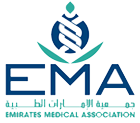Dental treatment under GA
General Anaesthesia
Dental treatment under GA provides a safe approach for children and persons with special health care needs who cannot accept treatment in a conventional office setting. Provision of dental treatment under GA for uncooperative, young children with dental needs has significant positive effects on quality of life for both these children and their families. Oral health related quality of life is measured in relation to how the mouth and teeth affect physical, psychological and social well being and daily activities such as eating, chewing, swallowing, speaking, playing, learning, happiness, embarrassment, and social interactions.
What Is It?
Anaesthesia is defined as the loss of feeling or sensation with or without a loss of consciousness. In reality, anaesthesia does more. In addition to keeping your child pain free during surgery, anaesthesia controls the body’s reaction to stress and relieves the fear and anxiety almost always associated with surgery. Anaesthesia may begin with an injection or by inhaling- breathing in- gases mixed with oxygen. Sometimes these different methods are used in combination.
How safe is it to have general anaesthesia in the dental office?
Dental treatment requiring general anaesthesia in an office environment poses similar risks to those inherent in any surgical procedure for children and can be made as safe as a general anaesthetic delivered in a hospital or surgical centre. Modern medicines and technology make the delivery of general anaesthesia in an office setting equivalent to the same service in a hospital or surgery centre.
What are the Indications for GA?
Indications for GA are based on specific criteria, taking into account the risks/benefits/effectiveness/anticipated outcomes and alternatives to other behavior management techniques. These criteria include pediatric patients:
- Who cannot cooperate due to a lack of psychological or emotional maturity and/or mental, physical or medical disability
- For whom local anesthesia is ineffective because of acute infection, anatomic variations, or allergy
- Who are moderately to extremely uncooperative
- Who are verbally uncommunicative because of psychosocial, medical, or cultural situations
- Who require significant restorative and/or surgical procedures
- For whom the use of GA may protect the developing psyche and/or reduce medical risk
- Who require immediate, comprehensive oral/dental care (e.g., dental abscess threatening patency of the airway or other anatomical structures)
- Who have demonstrated the inability to respond to other available behavior guidance techniques
Do we need special preparations?
- After midnight the night before the procedure, do not give any solid food or non-clear liquids. That includes milk, formula, juices with pulp, coffee, and chewing gum or candy.
- Up to 2 hours before the scheduled arrival time, give only clear liquids. Clear liquids include water and juices you can see through, such as apple or white grape juice. Milk is not a clear liquid.
- If your child takes daily medication, you may give it unless specifically told not to do so by your child’s doctor or the scheduling nurse.
How long will it take to recover after General Anaesthesia?
Each patient differs in his or her response to medications given during GA. Patients can recover as quickly as 30 minutes to an hour or more and recovery time may also be extended if you had pre-medication.
What happens after General Anaesthesia?
Once the procedures have been completed, your child will be taken to the recovery room where nurses will carefully check his or her vital signs. The effects of general anaesthesia can last for many hours.
- Your child’s nose, mouth, and throat may remain numb for 30 to 45 minutes after the procedure.
- Your child’s throat may remain slightly sore for 1 to 2 days after general anaesthesia.
- Your child’s gums and mouth may be sore for several days afterward, depending on the dental procedure.
- Use caution when your child eats and drinks for about 30 to 40 minutes after the procedure.
- Your child may feel dizzy or feel like vomiting.
- Give your child only soft foods for the first few hours after undergoing anaesthesia.
What are the most common side effects of GA?
Most common side effects are not particularly dangerous. They will either wear off or can be treated easily. Examples of side effects are nausea, vomiting, drowsiness, dizziness, sore throat, shivering, aches and pains, discomfort during injection of drugs, and agitation upon awakening from anaesthesia
At-Home Care and Follow-Up Visits
- Your child is not to return to school or day care that day, and you may need to see how he or she feels the next day. Sometimes the effects from general anaesthesia, usually tiredness, can last into the next day. Your child will need to remain at home where an adult can monitor him or her.
- Upon returning home, your child may only have minimal activity for the remainder of the day.
- Your dentist will tell you when you should schedule a follow-up visit.
When to call for help?
If your child’s gums are sensitive, Tylenol® or Motrin® will help with any discomfort. If your child experiences the following for more than 24 hours following dental surgery done with anaesthesia in the operating room, you should call the dentist:
- Fever
- Severe bleeding of the gums
- Severe pain
- Severe swelling in the lips, tongue or face
- Severe vomiting or dizziness




